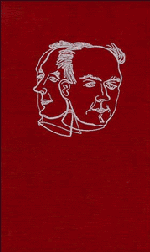INTRODUCTION
from NEW MUSICAL RESOURCES
Published online by Cambridge University Press: 05 June 2015
Summary
Contemporary music makes almost universal use of materials formerly considered unusable. These materials are in some degree acceptable to almost all music-lovers, and there is a tendency on the part of critics and the sophisticated public to be somewhat bored by new music which uses only old-fashioned means. In spite of their current use, however, little is known about the materials of contemporary music, and there are surprisingly few attempts to organize them into a unified system. Notwithstanding some very interesting works on new problems in music (such as Redfield's Music: a Science and an Art), written for the most part by scientists rather than musicians, a system co-ordinating the various materials of modem music has not been made public, so far as I know. Schönberg in his Harmonielehre carried the conventional study of harmony a step further. He explained many moderately complex harmonies by combining more chromatic passing tones and pointed out some well-known primary overtone relationships; but his work fails to explain music as involved as Schönberg's own compositions. A later theory, as yet unpublished by Schönberg, investigates very thoroughly the possibilities of the twelve-tone scale; which is, however, only one facet of contemporary materials. Eaglefield Hull in his book Modern Harmony has made one of the few attempts to give a general explanation of modern phenomena. Hull did not, however, offer any theory as to why the particular materials actually in use should have been found more acceptable than many other means which might have been used in their place. Although Hull's book was written some years ago, his efforts in classifying musical means without giving reasons for their existence are reflected in the attitude of some musicians today. If a student is told that triads are built on intervals of a third, he is not thereby made aware of the entire system of conventional harmony.
- Type
- Chapter
- Information
- New Musical Resources , pp. ix - xviiiPublisher: Cambridge University PressPrint publication year: 1996



